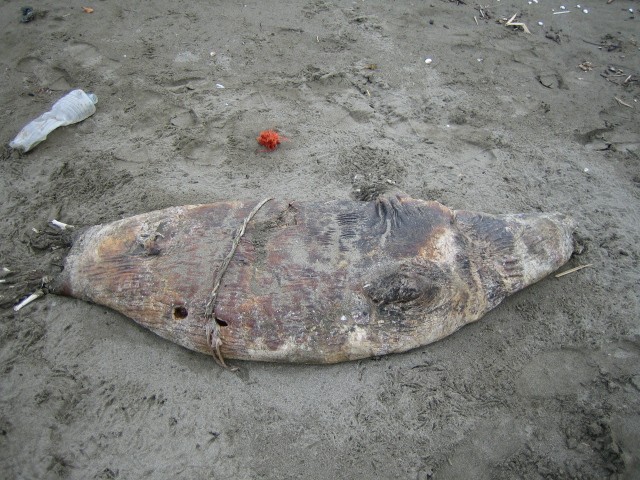
The Caspian Sea Crisis: Reasons Behind the Disappearance of the World’s Largest Enclosed Waterbody
The Caspian Sea, the largest closed inland waterbody on the planet, is diminishing at a concerning pace, presenting serious risks to economies, ecosystems, and human communities across five adjacent countries. Innovative research featured in Communications Earth & Environment uncovers a water emergency far exceeding earlier predictions, with extraordinary environmental and developmental repercussions having developed since the early 2000s.
A Fading Colossus
Spanning more than 370,000 square kilometers—bigger than the state of Montana or the nation of Germany—the Caspian Sea is surrounded by Azerbaijan, Iran, Kazakhstan, Russia, and Turkmenistan. Despite its name, it is not a genuine sea but a vast landlocked lake. Primarily nourished by rivers like the Volga and lacking a natural outlet, the Caspian Sea has preserved a fragile hydrological equilibrium for thousands of years.
However, that equilibrium is swiftly disintegrating.
Since 2001, researchers have noted extraordinary declines in water levels. Certain shorelines have receded over 56 kilometers (35 miles) inland. The northeastern section of the sea—formerly vibrant with life—is now merely a remnant of its past, having lost nearly 50% of its water surface in just 20 years.
Projections indicate that even with global warming capped at below 2°C, the sea level could fall by 5 to 10 meters (16-33 feet). In more severe warming scenarios, the decrease could reach 21 meters (69 feet) by the century’s end.
Ecosystems in Peril
This environmental decline is not solely a geographical issue—it represents an urgent ecological peril.
Among the sea’s distinctive inhabitants, the Caspian seal (Pusa caspica) is currently facing significant challenges. Having been endangered since 2008, it relies on seasonal ice for both breeding and spring molt. As warming waters diminish and eradicate sea ice, the seal’s breeding habitats are vanishing. A 5-meter drop in sea levels could reduce this crucial habitat by up to 81%.
Sturgeons, ancient fish coveted for their caviar and regarded as living fossils, are similarly threatened. With the drying of the shallow northern waters, scientists predict a habitat loss of 25 to 45% for these aquatic species—transformations that could devastate already vulnerable populations.
In Komsomol Bay, a coastal wetland in northeastern Kazakhstan recognized as an “Ecologically and Biologically Significant Area,” the sea has nearly disappeared. Previously a thriving breeding ground for seals and fish, it is now a dry basin, disrupting the natural balance for species dependent on its environment.
Economic and Social Ramifications
The ecological disaster is intertwined with broad economic and societal repercussions. Over 15 million individuals inhabit the shores of the Caspian, heavily depending on fishing, oil extraction, shipping, and tourism.
Small fishing communities are finding their boats marooned as waters recede. The port of Lagan in Russia may be left more than 115 kilometers from the new coastline—effectively isolating it from the sea. Major offshore oil installations might become unreachable by vessel, jeopardizing billions of dollars in infrastructure and potential investments.
The emergence of new desert land that was once submerged also echoes historical warnings. When the Aral Sea shrunk, the exposed seabed released salt and harmful dust, leading to widespread respiratory diseases in Central Asia. A similar fate could be in store for the Caspian region.
The accumulation of environmental pollutants in the newly exposed terrain raises imminent public health issues, especially in industrial hotspots where runoff has deposited heavy metals and hydrocarbons over many years.
Global Warming at the Heart of the Issue
“The ongoing decline is tied to global warming resulting in less precipitation, along with a significant rise in sea surface temperature and evaporation,” the researchers state. Increased air temperatures, reduced inflows from the Volga (which supplies 80% of the Caspian’s freshwater), and heightened evaporation rates have transformed the sea into a basin prone to evaporation—essentially drying out progressively each year.
Importantly, Dr. Simon Goodman of the University of Leeds, who oversaw the international research initiative, stressed that while some sea level loss may be unavoidable at this point, strategic planning can assist ecosystems and human development in adapting.
“If prompt measures are implemented, we can safeguard vital species and services, even as the shoreline evolves,” he stated.
A New Direction Ahead
One of the most pressing recommendations from the research team is to move away from outdated static conservation strategies, which assume that protected zones will remain geographically constant. Instead, they propose dynamic conservation—protection strategies that can evolve alongside the shifting coastline and ecosystems.
With a projected 10-meter decline in sea levels, protected marine zones could shrink from encompassing 16.8% of the Caspian to merely 1%, leaving biodiversity with scant legal protection. Dynamic modeling would allow for real-time adjustments, enhancing efforts to maintain breeding sites, migration routes, and essential habitats as the sea recedes.
Regional